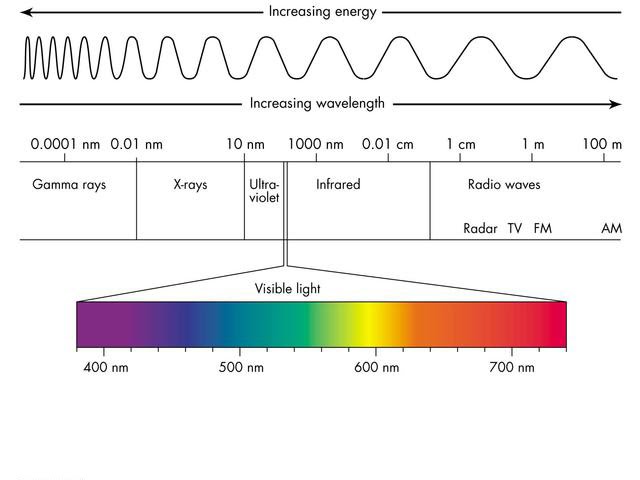What is light spectrum of different UV lights ?
What is light spectrum of different UV lights ?
Ultraviolet (UV) light falls in the range of the EM spectrum between visible light and X-rays. It has frequencies of about 8 × 1014 to 3 × 1016 cycles per second, or hertz (Hz), and wavelengths of about 380 nanometers (1.5 × 10−5 inches) to about 10 nm (4 × 10−7 inches). UV is generally divided into three sub-bands:
- UVA, or near UV (315–400 nm)
- UVB, or middle UV (280–315 nm)
- UVC, or far UV (180–280 nm)
Now let's check what is the spectrum of different UV lights.
1. First Sunlight UV Light Spectrum:
Very hot objects emit UV radiation. The sun emits ultraviolet radiation at all wavelengths, including the extreme ultraviolet where it crosses into X-rays at 10 nm. Extremely hot star emit proportionally more UV radiation than the Sun. sunlight in space at the top of Earth's atmosphere is composed of about 50% infrared light, 40% visible light, and 10% ultraviolet light, for a total intensity of about 1400 W/m2 in vacuum.
The atmosphere blocks about 77% of the Sun's UV, when the Sun is highest in the sky (at zenith), with absorption increasing at shorter UV wavelengths. At ground level with the sun at zenith, sunlight is 44% visible light, 3% ultraviolet, and the remainder infrared.Of the ultraviolet radiation that reaches the Earth's surface, more than 95% is the longer wavelengths of UVA, with the small remainder UVB. Almost no UVC reaches the Earth's surface.The fraction of UVB which remains in UV radiation after passing through the atmosphere is heavily dependent on cloud cover and atmospheric conditions. On "partly cloudy" days, patches of blue sky showing between clouds are also sources of (scattered) UVA and UVB, which are produced by rayleigh scattering in the same way as the visible blue light from those parts of the sky. UVB also plays a major role in plant development, as it affects most of the plant hormones.During total overcast, the amount of absorption due to clouds is heavily dependent on the thickness of the clouds and latitude, with no clear measurements correlating specific thickness and absorption of UVB.
The shorter bands of UVC, as well as even more-energetic UV radiation produced by the Sun, are absorbed by oxygen and generate the ozone in the ozone layer when single oxygen atoms produced by UV photolysis of dioxygen react with more dioxygen. The ozone layer is especially important in blocking most UVB and the remaining part of UVC not already blocked by ordinary oxygen in air.
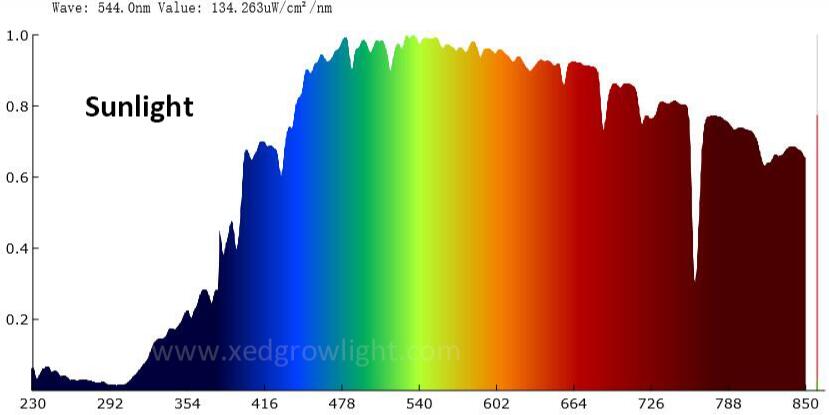
2. XED UV Light Spectrum:
XED UV light spectrum is very similar with sunlight, with full spectrum, composed of about 50% infrared light, 40% visible light, most are UV rays, and 10% ultraviolet light,more than 95% is the longer wavelengths of UVA, and with small part of UVB.
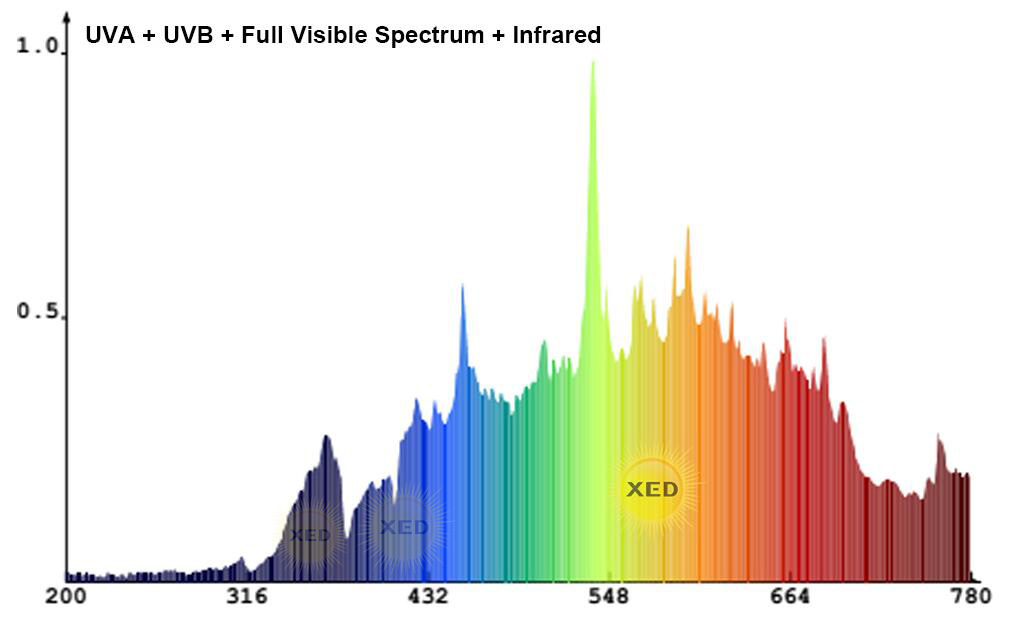
3. Fluorescent black UV light spectrum:
A black light lamp emits long-wave UVA radiation and little visible light. Fluorescent black light lamps work similarly to other fluorescent lamps, but use a phosphor on the inner tube surface which emits UVA radiation instead of visible light.
but because of the light intensity of fluorescent itself is low, so it is UV part light intensity is limited.
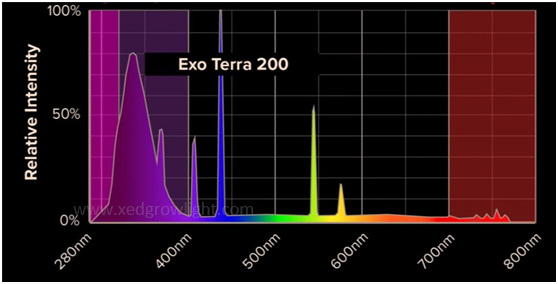
4. Mercury UV light spectrum:
Mercury lamp have full spectrum of visible part,including about big part of UV, and most are UVA, small part of UVB, and we can also notice that its UVC is stronger than UVB.
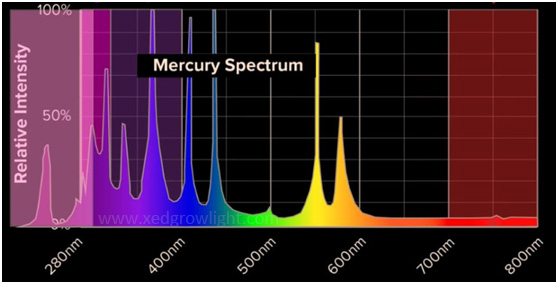
5. HPS UV light spectrum:
HPS with full spectrum of visible light and some part of far infrared, the UVA light is very little, no UVB.
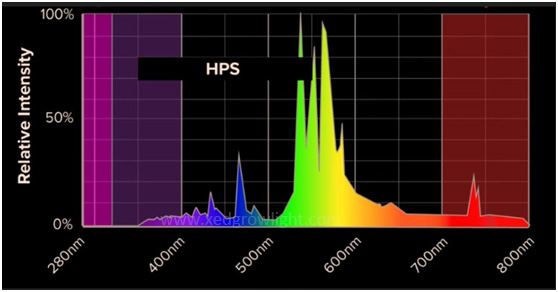
6. Metal Halide UV light spectrum:
Metal Halide Lamp also including full specctrum of visible light, infrared, only small part of UVA.
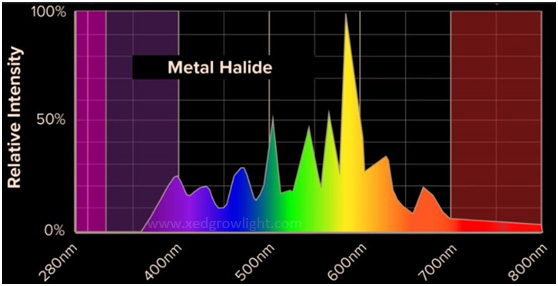
7. LED UV Light
This is LED UV light spectrum, from this spectrum, we can find that, most LED UV light in the market actually do not have UV.
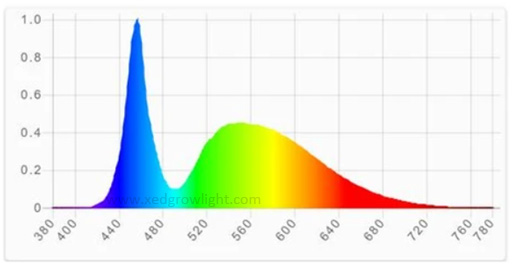
Life on earth has evolved with sunlight for billions of years. UV light is an indispensable part of the growth, life and reproduction of life on earth. In modern society, human beings and many biological activities and plant growth have been transferred to the indoor, so we need to choose a suitable artificial UV lamp as the replacement of sunlight, hope the above light spectrums of different UV lights can help you choose the best UV light needed.

